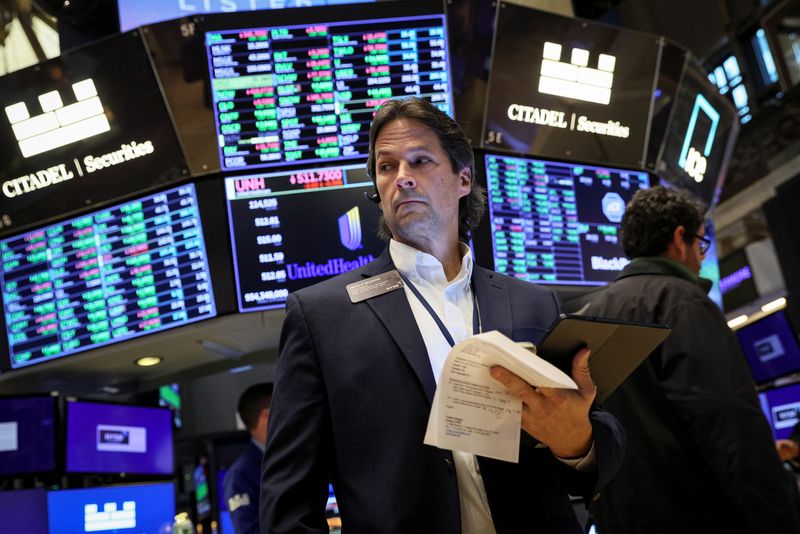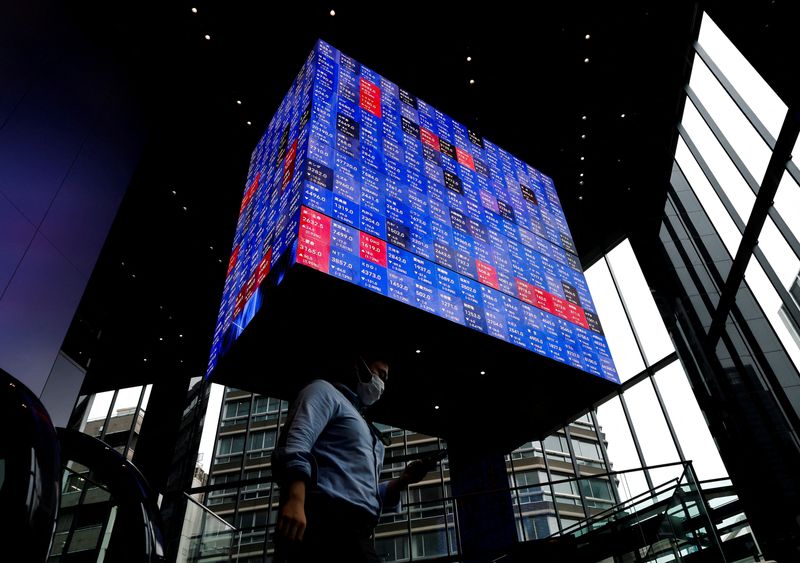By Sinéad Carew and Huw Jones
NEW YORK/LONDON (Reuters) - The S&P 500 closed up more than 1% while U.S. Treasury yields fell and the dollar was little changed on Wednesday as investors bet that upcoming U.S. inflation data would allow the Federal Reserve to slow the pace of interest rate hikes.
Longer-dated treasury yields fell a day before release of December's U.S. consumer price index (CPI) data as investors bet inflation is on a sustainable downward path that could lead the Fed to slow rate hikes or cut rates.
While the dollar index was virtually unchanged, the euro briefly hit a seven-month high against the greenback but held within a narrow range as traders avoided big moves ahead of the inflation data.
Crude oil prices shrugged off early losses to rally 3% as hopes for an improved global economic outlook and concern over the impact of sanctions on Russian crude output outweighed a massive surprise build in U.S. crude stocks.
"This week is bundled up in some good inflation expectations data for Thursday," said Nela Richardson, chief economist at ADP (NASDAQ:ADP).
"The Goldilocks report we got for December with strong employment growth and moderating wage growth was the best case scenario for the market. They're waiting for confirmation on Thursday that CPI is moderating. If they get that the rally will continue this week and on into next week."
December's CPI is expected to show annual inflation at 6.5%, down from 7.1% in November. The data will be crucial for investors placing bets on the Fed's next steps.
But with a tight labor market that is "not participating in the Fed's plan," Richardson says investors seem to "over-prioritze data that suggests the Fed will pivot."
"The market seems to think that a moderation in inflation necessarily leads to a Fed pivot but I don't. I think the Fed keeps hiking rates and that they stay at higher levels for some time," she said.
Current expectations are for a 25 basis points rate increase at the February meeting after a 50 basis point hike in December.
"The first step would be a downshift in the pace of hiking and the next would be a pause," said Cliff Hodge, chief investment officer at Cornerstone Wealth.
The Dow Jones Industrial Average rose 268.91 points, or 0.8%, to 33,973.01, the S&P 500 gained 50.36 points, or 1.28%, to 3,969.61 and the Nasdaq Composite added 189.04 points, or 1.76%, to 10,931.67.
The pan-European STOXX 600 index earlier closed up 0.38% while MSCI's gauge of stocks across the globe gained 1.04%. Emerging market stocks rose 0.28%.
In treasuries, benchmark 10-year notes were down 8.9 basis points to a 3.530% yield, from 3.619% late on Tuesday.
The 30-year bond was last down 10.5 basis points to yield 3.6491%, from 3.754%. The 2-year note was last was down 4.2 basis points to yield 4.2158%, from 4.258%.
Marvin Loh, senior global macro strategist at State Street (NYSE:STT) said the Fed likely faces a battle in coming months as the market prices in rate cuts or policymakers agree to cut rates.
But he noted that the Fed keeps saying it may have to keep rates higher longer than the market expects.
In currencies, the dollar index fell 0.01%, with the euro up 0.19% to $1.0754.
The Japanese yen weakened 0.15% versus the greenback at 132.45 per dollar, while Sterling was last trading at $1.2147, down 0.07% on the day.
In oil futures, U.S. crude settled up 3.05% at $77.41 per barrel and Brent settled at $82.67, up 3.21% on the day. Both benchmarks had settled at their highest levels since Dec. 30, with WTI up for a fifth consecutive day for the first time since October and Brent up for a third day in a row for the first time since December. [O/R]

In precious metals, spot gold was flat at $1,876.43 an ounce after earlier scaling an eight-month peak of $1,886.59.
Earlier, copper rose above $9,000 a tonne for the first time since June on hopes for demand improvements in China, which has removed COVID-19 restrictions.
